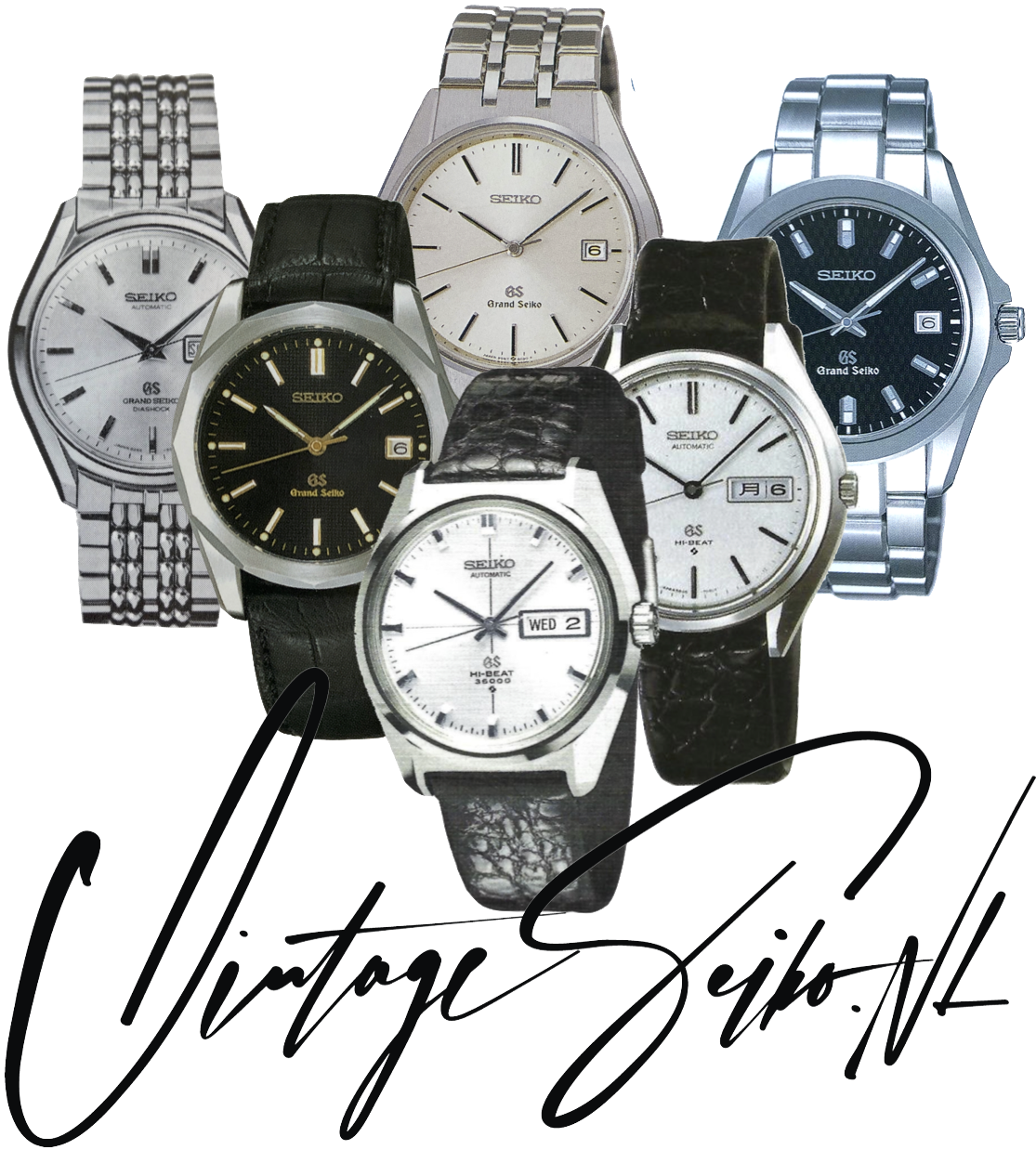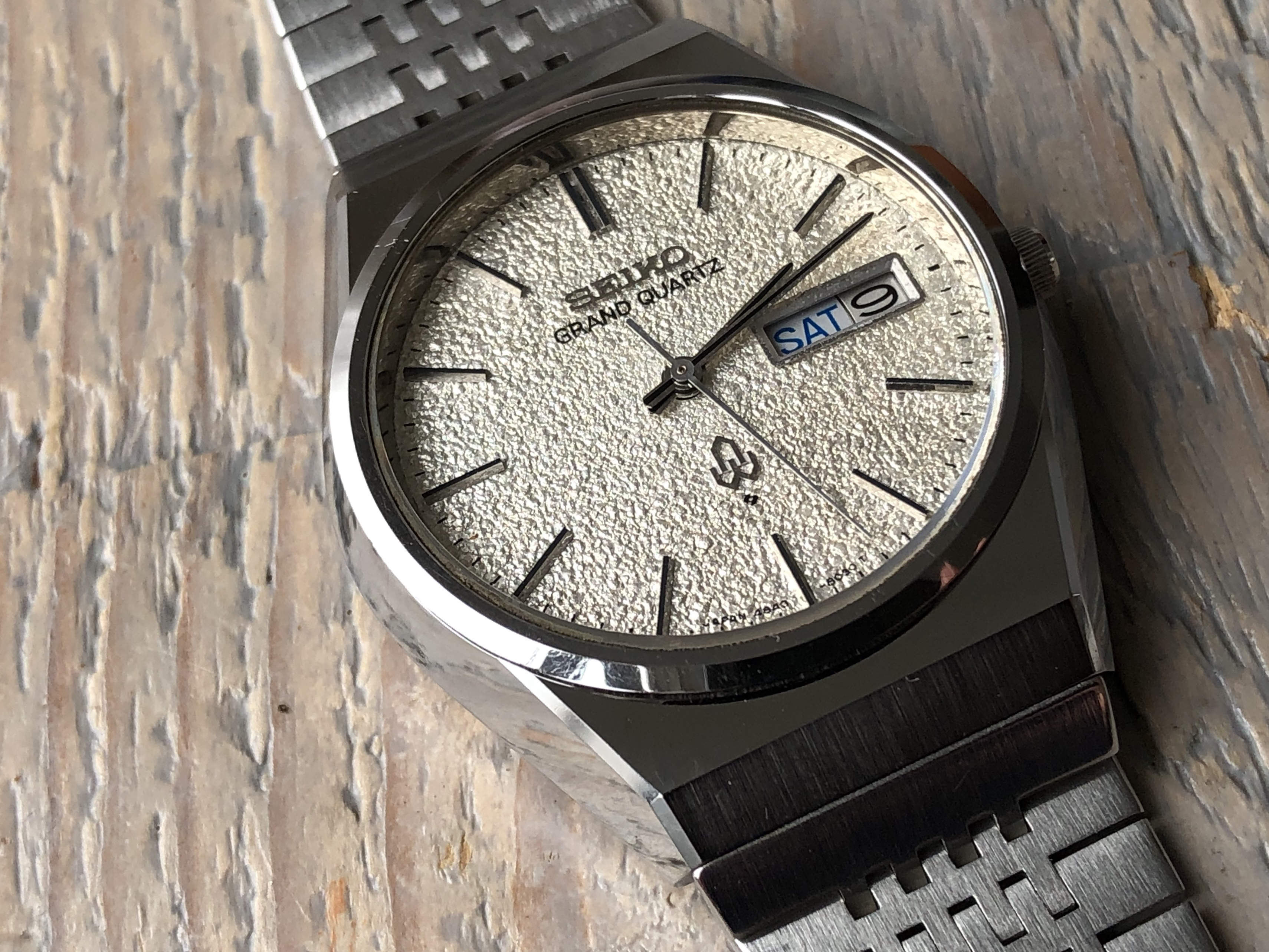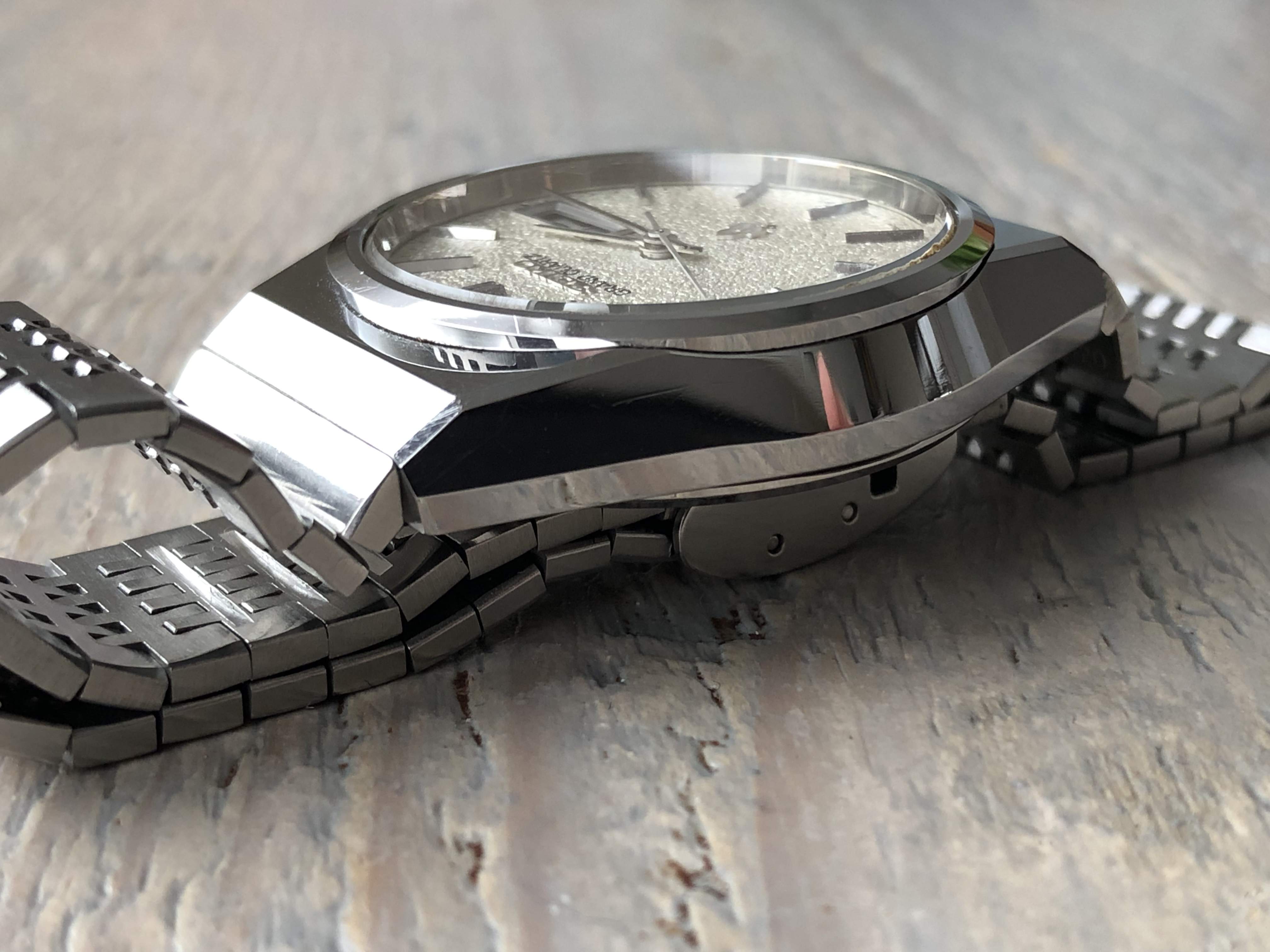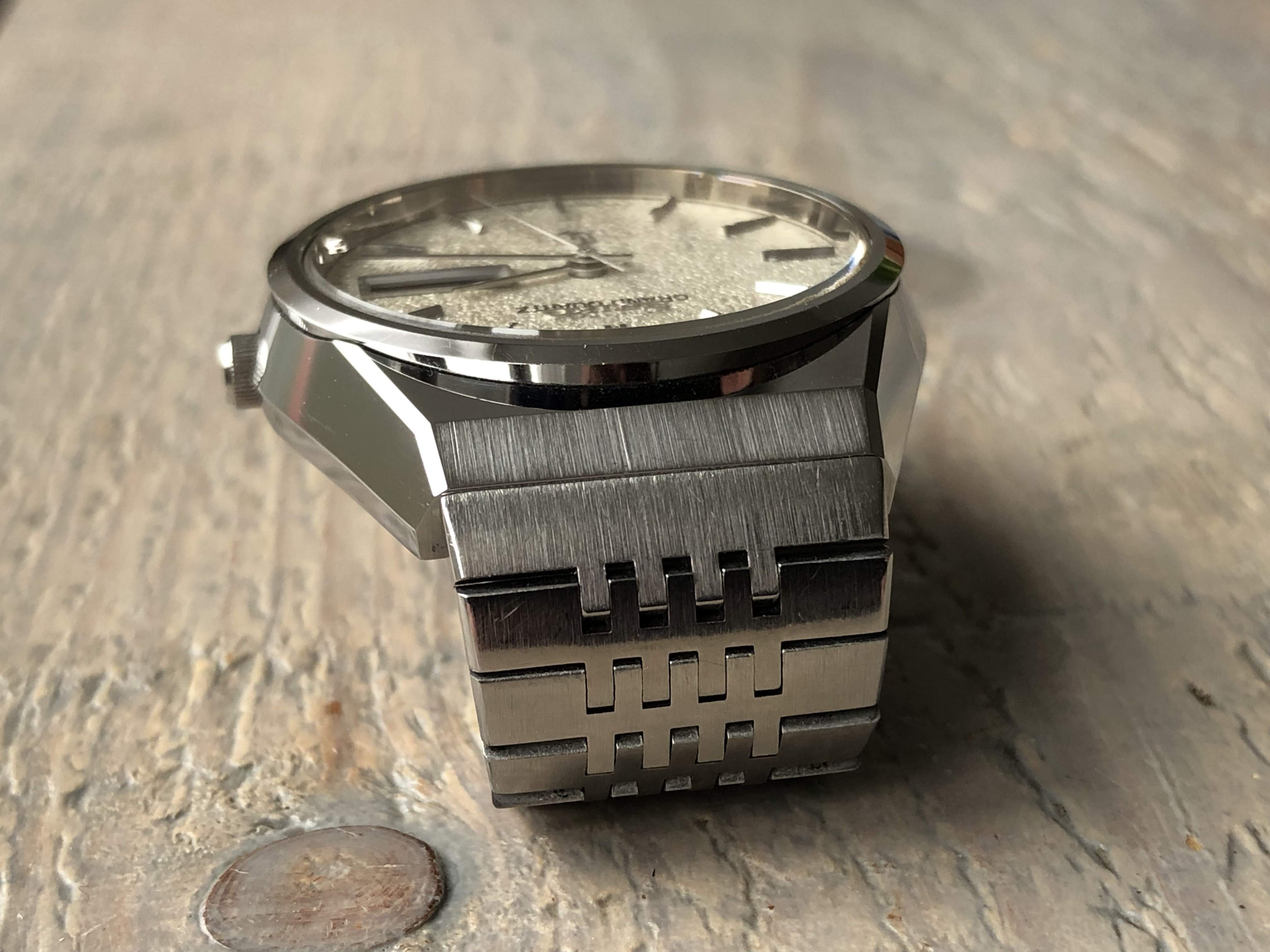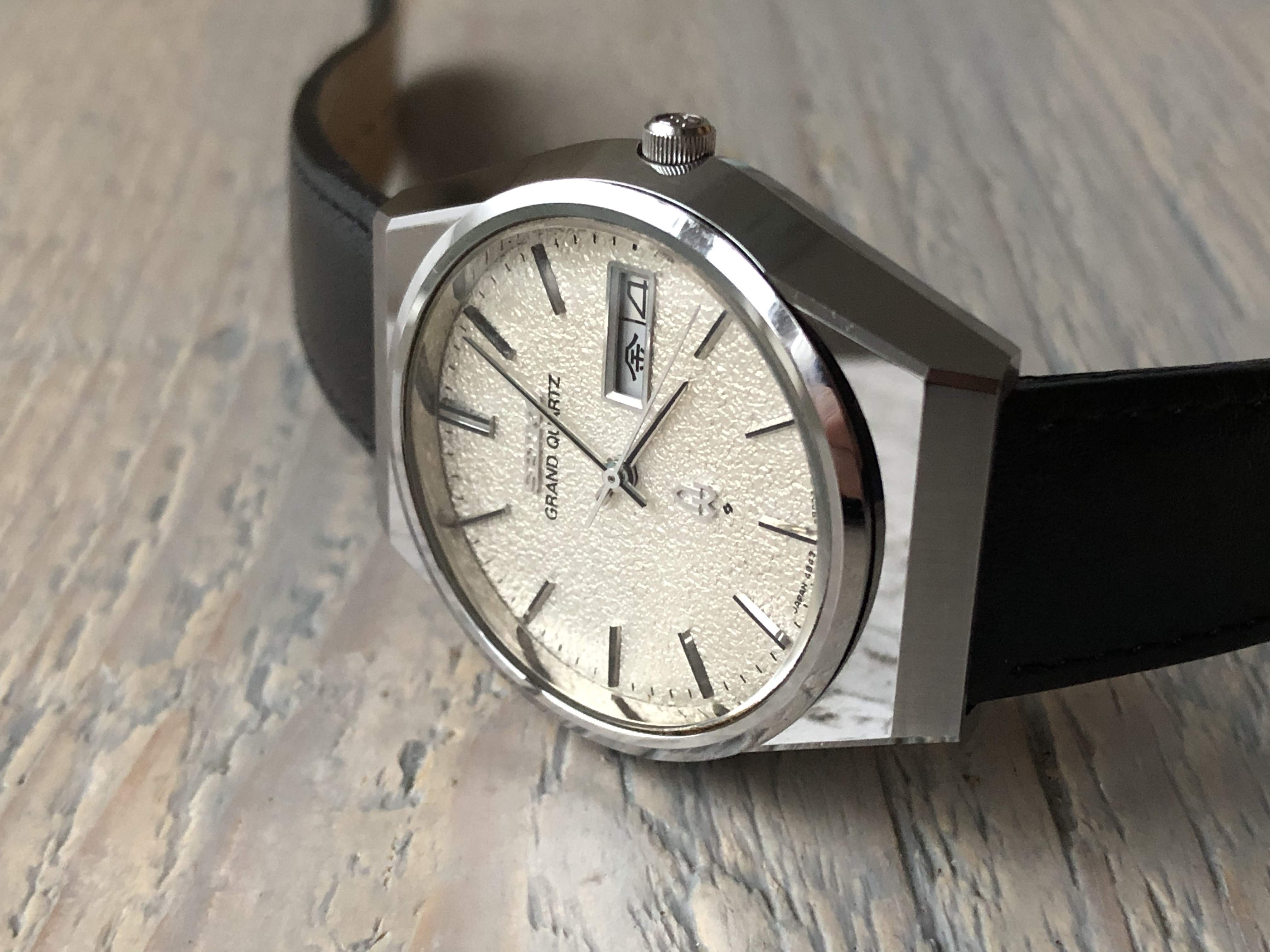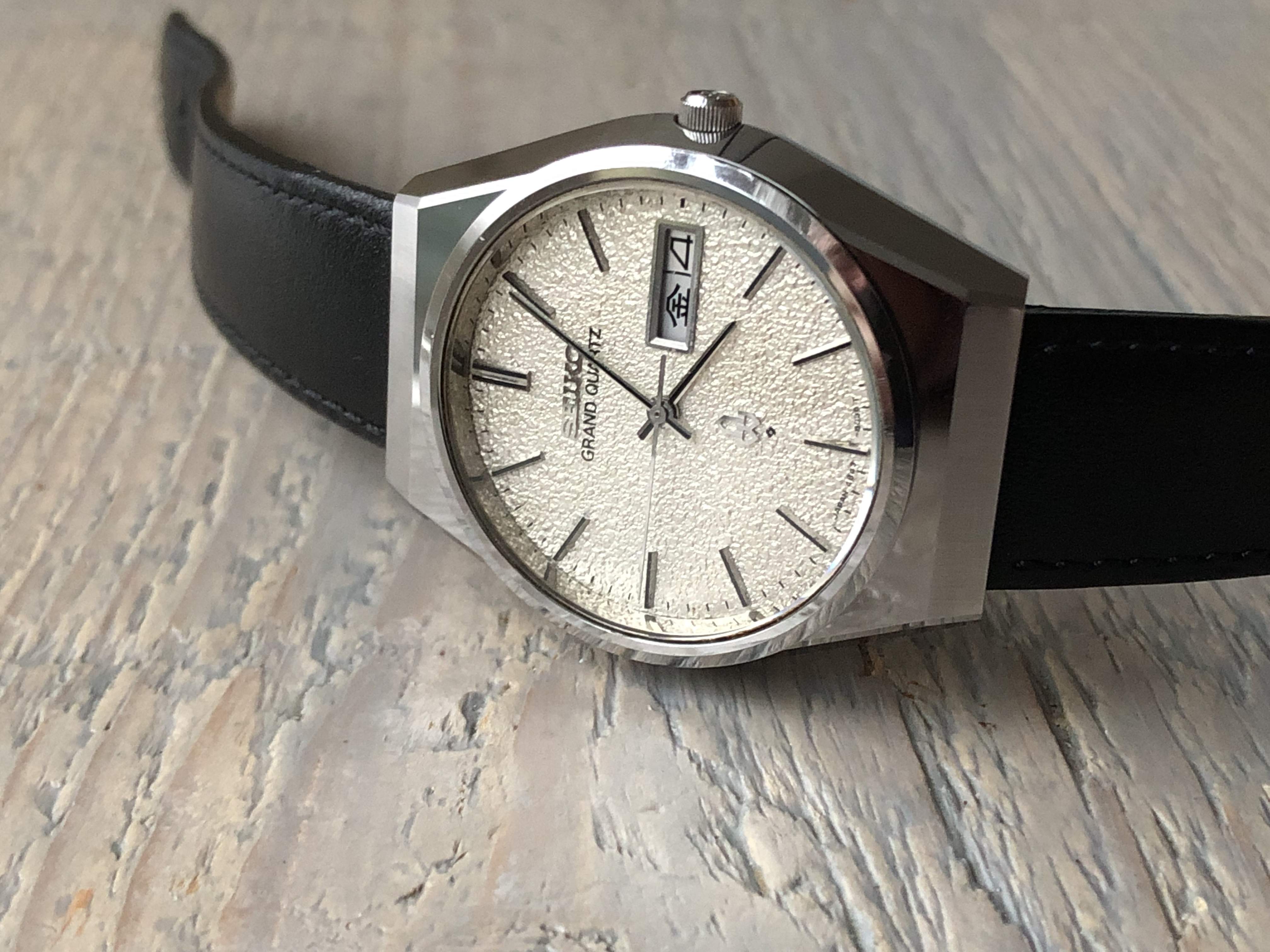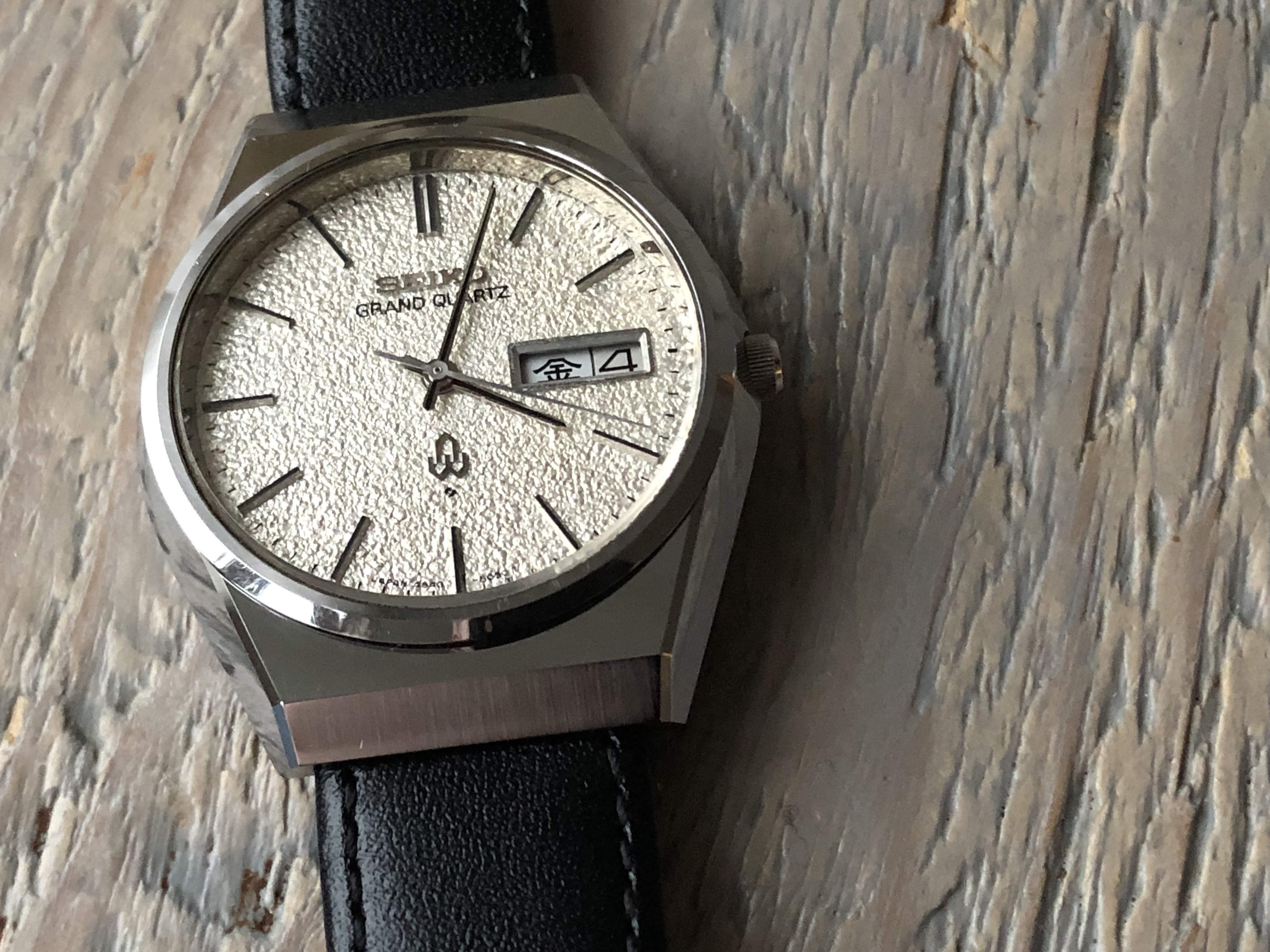
Seiko Grand Quartz 4843-8100 "Diamond Dust" (Sold)
€ 360.00
Sold out
| Manufacture | Seiko |
|---|---|
| Model | Grand Quartz |
| Reference | 4843 8100 |
| Movement | Quartz at -0,5 spd |
| Serial No. | 8DXXXX |
| Case | Hardened Steel, Tanaka design 36x42x11mm |
| Crystal | Hardlex |
| Dial | Diamond Dust |
| Bracelet | XBB020, +260 mm around |
| Lugs | 18mm |
| Production | 1978-12 |
| Condition | Excellent |
| Service | New battery, new battery hatch gasket |
| Box | No |
| Papers | No |
Seiko never could let go of that design philosophy and these days a gentler form of it can still be seen in the works of the Micro Artist Studio in Shiojiri, located in Japan's central Nagano region. They are the present day absolute elite unit, responsible for hand-crafting not only the incredible Eichi II, but also the Credor Minute Repeater and Sonnerie.
This is all great but not uniquely so, to the hard-core collector it is merely a confirmation of Seiko’s dial design genius and finishing techniques. We know this has been done before in the seventies, arguably Seiko’s golden age. More specifically, the Seiko Grand Quartz 4843-8100/8050 and 4840-8041 (and some others) have this dial, and arguably to an even more stunning degree of workmanship. The Zaratsu on the 8100/8050 is even more impressive, as it is done on hardened steel, Seiko was able to produce these cases when the design was particularly suited to this hardening and finishing process. This will gleam like glass – even after more than 40 years of service. Speaking about service, most of these the watches have run to specs all that time. The Micro Artist Studio has quite a reputation to live up to.
The old "Diamond Dust" dial GQ as stated is a very solidly made quartz. It was made early on in the production run of the 48-base caliber, which spanned just four years. In the first year of its production in 1975, only this caliber Grand Quartz reigned supreme right next to the 38 Quartz V.F.A with just three models, 8000/8010/8020, there were no other Grand Quartzes! The models 8030/8040 were introduced later in 1975 and made for just three years; they came with a thick steel band for the 4843 and with leather only for the 4840 & 4842. That setup never changed for this caliber. Even when the much daintier 8100/8110 variations were introduced in 1976.
In 1978 Seiko introduced the twin quartz 9943, ending all of the 48 caliber that year. The 48 of the year before however remained a thicker and wider flaring watch (38x43x11mm!) and was more robust than its 994X descendant - it is after all a Tanaka design. Therefore, it already has a huge presence, apart from its very modern dimensions. This is also translated into the bracelet mentioned, which was uniquely designed for 1976/77 only. It is a very heavy, very tight bracelet - almost like those of the King Seiko Vanac of the day.
The 48 caliber has a definite "butch" personality to it as evidenced by its measurements of course... It is the definite early "king" as other variations like the 8100-model series are already smaller with lugs of 18mm instead of 19mm and dimensions of 36x42x11mm. For that matter, even the 8041 model has the larger case size compared to the 8040, even if it is only one millimeter more from lug to lug (42, not 41mm). Also, the lugs have a slightly different shape to them as seen from the front - which makes them seems longer. It is however the veritable twin brother.
Describing this caliber watch reminds one that, for instance, the thermo-compensation, due to its relative thickness, is still excellent after all these years. Also, the incredible dial work is still impeccable when the watch has never been breached but merely maintained. It is truly a high-end watch, easily comparable to modern Grand Seikos. Some might even argue that these "Grand" Seikos have never been surpassed in terms of historical significance or groundbreaking design. Tanaka design influences still deliver the best GS experience.
Internally, Grand Quartz had all sorts of technical innovations, twin quartz eventually being just one of them. This first GQ-caliber had great legibility due to Zaratsu finished minute markers and some extra "punch". That punch is quite literally implemented in the mechanics of this watch, it has that special Seiko gimmick of the "jumping seconds hand" (before it even evolved into the seiko "dancing hands"). This means that it will jump ahead 10 seconds when you pull the crown to adjust the time. It makes time setting so much easier!
In my experience these single quartzes are among the most accurate vintages; the twin quartzes like the 99 series mentioned have the specs for sure, but after 40 years or so… build quality and robustness gain the upper hand. The early Grand Quartzes truly shine.
